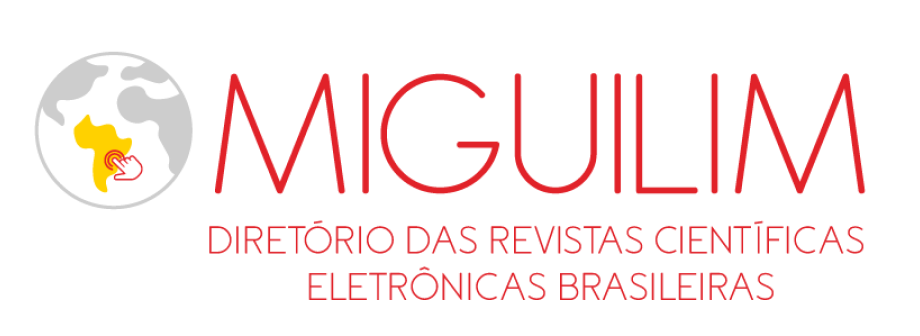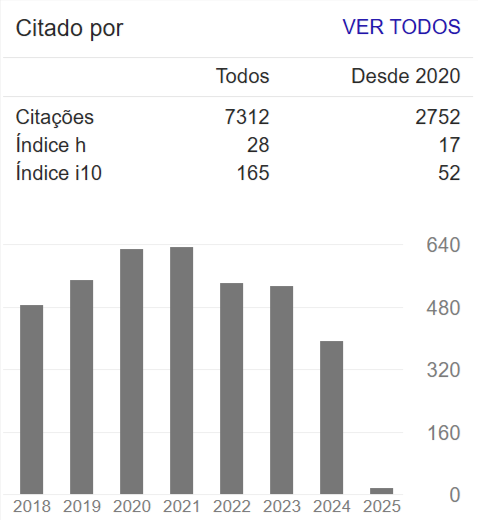Hydrogeological and numerical criteria for groundwater withdrawal permission in the Marizal-São Sebastião Aquifer, State of Bahia, Brazil
Resumen
Groundwater is part of the water supply for industrial use in the Camaçari Industrial Complex (CIC) (Bahia, 2016). Managers from the CIC developed a computational model to evaluate exploitation of groundwater, the Regional Numerical Flow Model (RNFM), which has the function of calculating groundwater volumes for withdrawal in order to choose the best location for the pumping wells and to establish the aquifer hydrological equilibrium during the regime of groundwater withdrawal. In addition to the current management this work proposes hydrogeological criteria for granting groundwater withdrawal permission from the Marizal-São Sebastião aquifer system in the CIC region. To introduce the hydrogeological criteria, this work developed a new water zoning for the aquifer; calculated the water reserves and potentials for each zone; and classified the water zones in terms of the degree of exploitation favorability. To confirm the adequacy of the proposed criteria, this work reevaluated a previous permission process in the region (11 pumping wells), for which the NRFM established the well locations and the groundwater volumes to explore. This work verified that using only the NRFM, which is the current management tool for granting groundwater withdrawal licenses in the CIC region, is not conservative enough for sustainable groundwater withdrawal in each water zone. Using the combination of hydrogeological and numerical methodologies for the pumping wells would result in a better choice for well locations in water zones with larger groundwater potential and favorability, thus promoting a sustainable groundwater exploitation.
Citas
ANA. Conjuntura dos recursos hídricos: informe 2014. Brasí-lia, 2015. Available at: http://conjuntura.ana.gov.br/docs/conj2014_inf.pdf. Con-sulted on: 29 Abr. 2019.
BAHIA. Secretaria da Indústria, Comércio e Mineração do Estado da Bahia – SICM. Plano Diretor do Polo Industrial de Camaçari. Salvador, BA: Governo do Estado da Bahia, 2013.
BAHIA. Secretaria de Infraestrutura Hídrica e Saneamento. Plano de abastecimento de água da Região Metropolitana de Salvador, Santo Amaro e Saubara. Relatório Parcial Fase I – TOMO II – Estudos Básicos, v.2, cap.1. Salvador, BA: Governo do Estado da Bahia, 2016.
Bredehoeft, J.D.The water budget myth revisited: why hydro-geologists model. Ground Water, 40, 340–345, 2002. https://doi.org/10.1111/j.1745-6584.2002.tb02511.x
CASTRO J.E. 2007. Water Governance in the twentieth-first century. Ambiente e Sociedade, v. 10, n. 2, 2007. https://doi.org/10.1590/S1414-753X2007000200007
CASTRO C. M.; MELLO, R. M. Explotação de água subterrânea no Distrito Federal. In: SIMPÓSIO BRASILEIRO DE RECURSOS HÍDRICOS, 19., 2011. [Anais...]. Maceió, 2011.
CETREL. Plano de gestão integrada e zoneamento dos recur-sos hídricos no polo industrial de Camaçari. Relatório Inter-no, 1, 2012.
COSTA W.D. Avaliação de Reservas, Potencialidades e Dis-ponibilidades de Aquíferos. In: CONGRESSO BRASILEIRO DE ÁGUAS SUBTERRÂNEAS - ABAS, 10., 1998. [Anais...]. São Paulo, 1998.
CPRM. Serviço Geológico do Brasil. Mapa Geológico do Esta-do da Bahia: arquivo digital, 1990. Disponível em: http://geobank.cprm.gov.br/. Acesso em: 03 maio 2016. Escala 1:1. 000.000. GEOBANK: gdba_lito.
CPRM. Serviço Geológico do Brasil. Hidrogeologia: conceitos e aplicações. Recife: UFPE / Laboratório de Hidrogeologia, 2000.
DE STEFANO L.; LOPEZ-GUNN, E. 2012. Unauthorized groundwater use: Institutional, social and ethical considera-tions. Water Policy, 14(S1), p. 147-160, 2012. https://doi.org/10.2166/wp.2012.101
FETTER C.W. Applied hydrogeology. Third Edition. University of Wisconsin – Oshkosh. Prentice Hall, 1994. 691 p.
GLEICK, P. Water in crisis: a guide to the world’s fresh water resources. New York: Oxford University Press, 1993.
IBGE – EMBRAPA. Mapa de Solos do Brasil. Escala 1:5.000.000. Rio de Janeiro, 2001. Available in: http://www.dpi.inpe.br/Ambdata/mapa_solos.php.
INMET. Instituto Nacional de Meteorologia. Banco de dados meteorológicos para ensino e pesquisa: arquivo digital. Mi-nistério da Agricultura, Pecuária e Abastecimento, 2017. Disponível em: http://www.inmet.gov.br/portal/index.php?r=bdmep/bdmep. Accessed in: 04 aug. 2017.
LALL U., HEIKKILA T.; BROWN C.; SIEGFRIED, T. Water: a global challenge: water in the 21st Century: Defining the Elements of Global Crises and Potential Solutions. Journal of International Affairs, v. 61, n. 2, p. 1-17, 2008.
LIMA O.A.L. Caracterização hidráulica e padrões de poluição no aquífero recôncavo na região de camaçari – Dias D’Ávila. Tese para Concurso Público de Professor Titular, Departa-mento de Geologia e Geofísica Aplicada, Instituto de Geoci-ências, Universidade Federal da Bahia, 1999. 123 p.
MOENCH M.; KULKARNI H.; MACDONALD, D. The manage-ment challenge: what can be done? In Community manage-ment of groundwater resources in rural India. In: CALOW, R. ; MACDONALD, D. (eds.). British Geological Survey Commissi-oned Report CR/05/36N, p. 39-70, 2005.
MONTGINOUL, M.; RINAUDO J.D.; BROZOVIC, N.; DONOSO, G. Controlling groundwater exploitation through economics instruments: current practices, challenges and innovative approaches. In: Integrated Groundwater Management, Ver-lag: Springer International Publishing, 2016. https://doi.org/10.1007/978-3-319-23576-9_22
ROEDEL, R. M. Proposição de critérios técnicos para outorga de águas subterrâneas. Estudo de caso: polo industrial de Camaçari. 2017. Dissertação (Mestrado em Engenharia ambiental Urbana) – Departamento de Engenharia Ambien-tal, Universidade Federal da Bahia Salvador, 2017
SANTOS, P.R.P. Estudo da vulnerabilidade à poluição do aquífero marizal na região de influência do polo industrial de Camaçari (PIC) – BA. Dissertação (Mestrado Profissional em Gerenciamento e Tecnologias Ambientais no Processo Pro-dutivo – MEPLIM) - Departamento de Engenharia Ambiental, Universidade Federal da Bahia, 2010.
SCANLON, B.R.; HEALY, R.W.; COOK, P.G. Choosing appropri-ate techniques for quantifying groundwater recharge. Hydro-geology Journal, v. 10, p. 18–39, 2002. https://doi.org/10.1007/s10040-001-0176-2
SHIKLOMANOV, I. A.; RODDA, J.C. (Eds.) World water resour-ces at the be-ginning of the 21st century. Cambridge, UK: UNESCO International Hydrology Series, 2003.
TERRELL B.; JOHNSON P.; SEGARRA, E. Ogallala aquifer depletion: economic impact on the Texas high plains. Water Policy v. 4, n. 1, p. 33-46, 2002. https://doi.org/10.1016/S1366-7017(02)00009-0
TUCCI, C.E.M. Gestão de recursos hídricos superficiais no polo industrial de Camaçari. RHAMA Consultoria Ambiental Ltda, 2009.
VILLAR, P.C. Aquíferos transfronteiriços: Governança das Águas e o Aquífero Guarani. Curitiba: Showroom Juruá: Av. Munhoz da Rocha, 143 – Juvevê, 8 de jun. de 2015.
WATERLOO BRASIL. Zoneamento dos recursos hídricos sub-terrâneos na Região do Polo Petroquímico de Camaçari/BA. Relatório Interno Camaçari: Cetrel, 2003.
WHO. Progress on drinking water and sanitation. Update. Geneva: WHO, 2014.
Zhou, Y., 2009. A critical review of groundwater budget myth, safe yield and sustainability. Journal of Hydrology, v. 370, p. 207-2013, 2009.

















